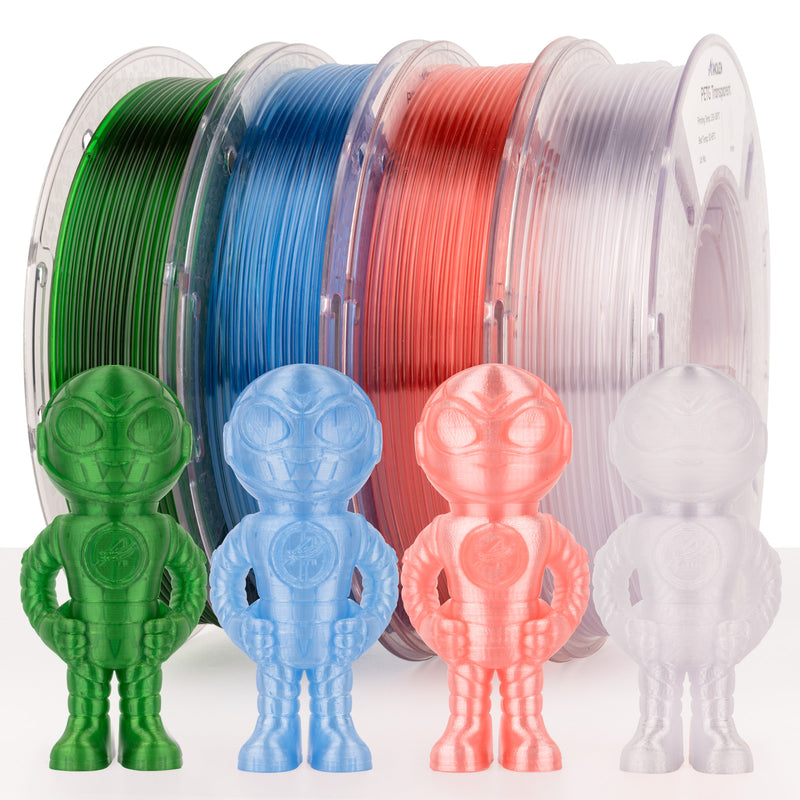Discover the Secrets: Which PETG 3D Printing Filament Will Transform Your Creations?
Choosing the right PETG 3D printing filament is crucial for anyone looking to create high-quality prints in the ever-evolving world of 3D printing. PETG, or Polyethylene Terephthalate Glycol, has gained immense popularity among hobbyists and professionals alike due to its unique characteristics. Unlike other filaments, PETG strikes a perfect balance between the ease of use associated with PLA and the durability of ABS. With its excellent layer adhesion, flexibility, and resistance to impact and moisture, PETG is ideal for a wide range of applications, from prototypes to functional parts. As the 3D printing community continues to expand, understanding the nuances of PETG filaments and their various suppliers becomes increasingly important for achieving the best results.

Understanding PETG 3D Printing Filament
PETG is a thermoplastic polymer that is part of the polyester family. Its chemical composition consists of a combination of ethylene glycol and terephthalic acid, which gives it unique properties. Unlike PLA, which is biodegradable but can be brittle, or ABS, which is known for its strength but can warp easily, PETG offers a middle ground. It is significantly tougher than PLA, making it less prone to breaking under stress, while also being easier to print compared to ABS, which typically requires a heated bed and careful temperature management. Additionally, PETG filaments are known for their clarity, allowing for beautiful, glossy finishes in transparent prints. This combination of durability, flexibility, and user-friendliness makes PETG an attractive option for both novice and experienced 3D printing enthusiasts.
Key Features to Consider When Choosing PETG Filament
When selecting PETG filament, several key features should be considered to ensure optimal printing results. Temperature resistance is crucial; PETG generally prints well between 220°C and 250°C. Clarity is another important factor, especially for projects requiring transparency or a glossy finish; some filaments may offer better clarity than others. Additionally, considering the ease of printing is vital, as some PETG filaments are designed to minimize stringing and oozing, making them more user-friendly. Color options can also add a creative touch to your projects, with many suppliers offering a broad spectrum of hues, including vibrant colors and specialty finishes. Lastly, filament diameter is essential, as most 3D printers are compatible with either 1.75mm or 2.85mm filaments; ensuring you select the correct diameter for your printer will prevent issues during the printing process.
Comparative Analysis of Different PETG Suppliers
As the market for PETG filament continues to grow, it's essential to compare various suppliers to find the best fit for your needs. Quality is paramount; some suppliers produce filaments that exhibit superior consistency in diameter and color, resulting in more reliable prints. Availability is another significant factor; while some brands have a wide range of colors and types in stock, others may have limited options, which can affect your ability to complete projects. User reviews can provide valuable insights into the performance of different filaments, revealing issues such as clogging or poor adhesion. Additionally, the design of the filament spool and packaging can impact usability; well-designed spools minimize tangling and make storage easier. A personal experience shared by a friend highlighted the importance of supplier reliability when they faced a project deadline and needed a specific color of PETG filament. Their choice to go with a well-reviewed supplier resulted in timely delivery and high-quality prints, showcasing the importance of thorough research before making a purchase.
Tips for Successfully Printing with PETG Filament
To achieve optimal results when printing with PETG filament, certain best practices should be followed. First and foremost, bed adhesion is crucial; using a heated bed set to around 70°C can significantly enhance adhesion and prevent warping. Additionally, using adhesives such as glue sticks or specialized sprays can further improve adhesion. Temperature settings also play a vital role; experimenting within the recommended range can help you find the sweet spot for your specific printer and filament. Print speed should be adjusted to accommodate PETG's unique properties; slower speeds may yield better results by reducing stringing and improving detail. Lastly, regular maintenance of your printer, including cleaning the nozzle and ensuring the extruder is functioning correctly, can help avoid common printing issues. A friend of mine shared their experience of adjusting print speed and temperature settings, which ultimately led to significantly better prints and a smoother overall process.
Final Thoughts on Selecting PETG Filament
In summary, selecting the right PETG 3D printing filament is essential for enhancing your 3D printing projects. Understanding the unique properties of PETG, along with the key features to consider when choosing a supplier, can lead to better quality prints and a more enjoyable printing experience. By exploring different options and experimenting with various suppliers, you can find the perfect PETG filament that meets your specific needs. Whether you are a seasoned professional or just starting your 3D printing journey, the right filament can truly transform your creations and elevate your projects to new heights.






